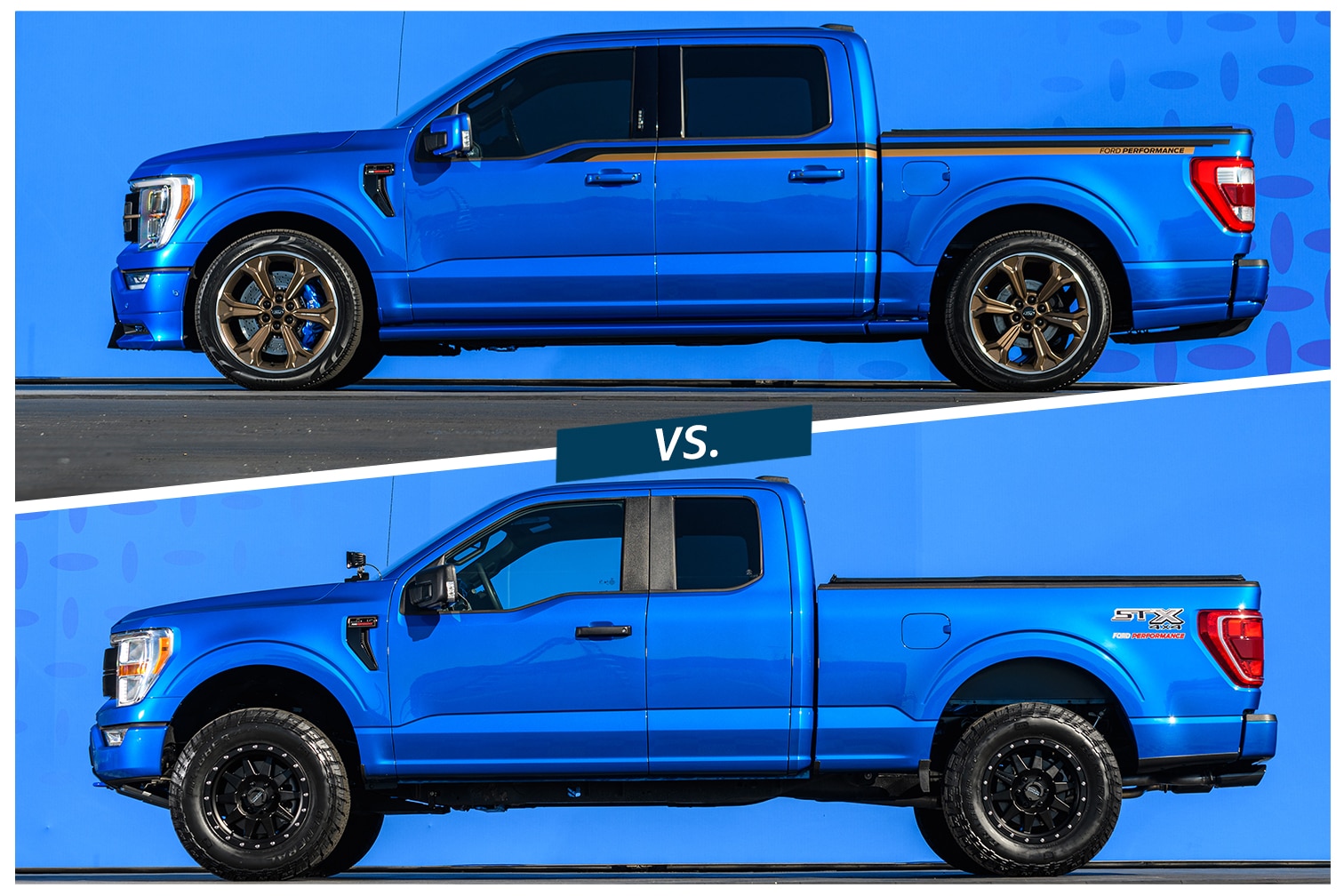Crew Cab vs. Extended Cab: How to Weigh Your Options
In the market for a truck? If you're on the fence about what you want, considering a crew cab vs. extended cab might help you land on a decision.
 Ford
Ford
In the market for a new truck? If you're on the fence about what you want in terms of interior, comparing a crew cab vs. extended cab might help you land on a decision. Both options have a lot to offer, depending on what you're looking for in a truck. From full size trucks, like the Ford F-150s featured in this article, to medium size trucks, like the Toyota Tacoma, there are a number that are available in both body styles. Here's what to know.
What Is a Crew Cab vs. Extended Cab?
First, the basics. Both crew cabs and extended cabs are larger truck models. Crew cabs are the biggest cab size available for trucks, and they are made for families, transporting working crews, or hauling more equipment than usual around in the cab. Crew cabs add an additional row of seats—similar to an extended cab—but they are somewhat longer.
An extended cab, conversely, is a midsize interior option for trucks, and offers more room than regular or standard cab trucks. They have an extra row of seats but are smaller than crew cabs and often have small rear-hinged doors, or no rear doors at all.
What Are the Similarities and Differences?
One way in which these two cab types are similar is their capacity. Crew cabs and extended cabs have two rows of seats (in front and in back). Extended cab trucks often seat four or five people, but generally with less comfort than crew cab trucks. The smaller rear seats in extended cab trucks are often suitable for short trips or smaller passengers. Conversely, crew cab trucks can include two bench seats in some configurations, allowing for seating up to six passengers.
There are several differences between extended cabs and crew cabs, including the following factors.
Sizing
Extended cabs are smack in the middle of cab size—bigger than regular cab trucks but a bit smaller than crew cabs. They are smaller because the actual cab is a bit shorter.
Crew cabs, on the other hand, are usually the roomiest option for cab sizes, often surpassing both extended cabs and regular cabs.
Take the 2022 Ford F-150 for example. A Supercab (Ford's name for extended cab) with a 6.5-foot bed is 231.7 inches long, while a Supercrew with the 6.5-foot bed is 243.5 inches long. That's almost a foot longer! When equipped with the 5.5-foot bed, the crew cab is the same overall length as the extended cab truck.
Doors
This is perhaps the biggest difference when looking at extended cab vs. crew cab options. Trucks with extended cabs don't always have back doors. On extended cabs that don't have them, you can get to the back row by folding down the front seats. Some models of extended cab trucks do have back doors, but they are usually smaller than the front doors and must be closed before the front doors, or cannot be opened until the front doors have been.
This is where the crew cab displays its roominess. It typically comes with both back doors and front doors, all of which are full-sized front-hinged doors. On some of the roomiest models, doors may hinge ever further open to provide easier entry.
Bed Options
Another area in which these two types of cabs vary is bed options. Extended cabs are available in all bed sizes. Since these types of cabs are shorter than crew cabs, they are more apt to come with longer beds.
Crew cabs, on the other hand, are mostly designed with more compact bed sizes. Most consumers in the market for a crew cab are focused on how spacious it is. This is of key importance to those who need to frequently carry a lot of people, whether that's a family or a work crew. Also, a crew cab can be more challenging to drive, given its long length.
Price
Price is a considerable factor when it comes to extended cabs vs. crew cabs. Crew cabs are more often expensive than extended cabs. They are typically more pricey because of their heftier size and full-sized doors. Consumers looking to add a larger bed size would see a significant price increase.
Availability
Buyers should take time to research what types of cab and bed sizes are available on their truck of choice. You may want to research various manufacturers to find what combinations of cab and bed sizes they offer. Keep in mind that not all models will be available in each size of cab. Doing your pre-shopping homework is the best route when determining which option is best for you.
Written by humans.
Edited by humans.
 Lindsay Martell
Lindsay MartellLindsay Martell is a Charlotte, NC-based journalist, copywriter, and voiceover artist. She writes about everything from automotive tech to adult ballet to competitive cheerleading. Her work has appeared nationally across various automotive and entertainment outlets. Her skills are turning complex tech terms into simple, palatable pieces of information. She has covered technology since 2000, and thrives on covering innovative tech trends.
Related articles
View more related articles